
Shanghai Opera is mostly spread in Shanghai and its surrounding areas. Although it is "a small corner", there are many excellent Shanghai Opera film and television works, such as "Ludang Tinder", "Arhat Money", "Xuanzi" and so on.
In recent years, in addition to carrying forward the traditional repertoire, Shanghai Opera has also created a number of excellent works with new era characteristics based on the present. Among them, the Shanghai Opera live-action film "Daughter of Dunhuang" is amazing. As a local opera combined with video media, it has carried out solid and innovative development Art exploration.
The film is based on the Shanghai opera stage play "Daughter of Dunhuang" and Fan Jinshi, the honorary director of the Dunhuang Academy, truly and delicately shows that several generations of Dunhuang people represented by Fan Jinshi took root in the desert and have no regrets for protecting the Mogao Grottoes. A lifelong story of dedication. The film is directed by Teng Junjie, starring Mao Shanyu, and the original cast of the stage play is jointly completed. The creative team went deep into Dunhuang, Gansu Province to shoot live scenes, transformed theater art into video art, and turned programming into video, thus presenting a new artistic life, and won the Best Opera Film Award at the 35th Golden Rooster Awards.
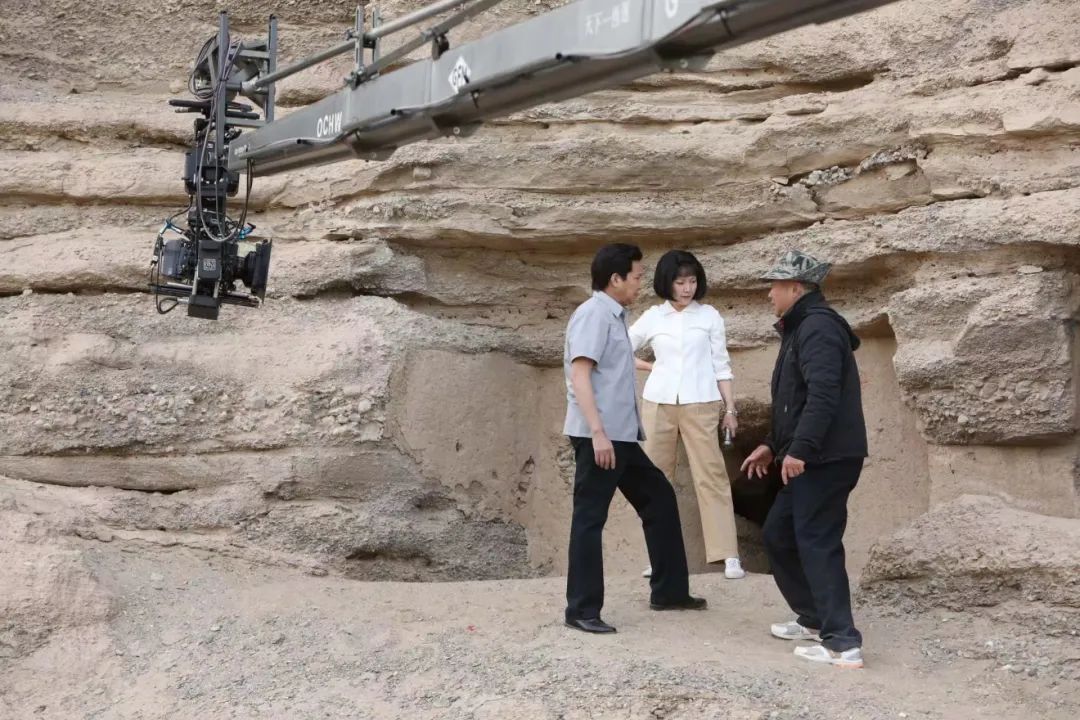
Director Teng Junjie explained the film performance requirements to Fan Jinshi and Peng Jinzhang's actors Mao Shanyu and Qian Shijian.
"Daughter of Dunhuang" has been polished on the stage of Shanghai Opera for 10 years. It is very mature in terms of script, singing and performance. If it is remade into a movie, it should be easy to complete if it is only based on traditional stage art records. But the director's creative desires don't stop there. Director Teng Junjie has been deeply involved in the creation of operas and films in recent years. Following his principle of "respecting the past without sticking to the past, innovation without losing the original", he strives to make breakthroughs in each work.
More than 70 years ago, director Fei Mu filmed the first color opera film "Life and Death" for master Mei Lanfang. The two artists had a discussion on how to keep the traditional formula of opera on the screen while conforming to the aesthetics of the film, and finally formed the " The combination of setting as reality and performance as virtual", the great cooperation of the two artists opened the pioneering work of the integration of program and image. Today, with the rapid development of video technology, "Daughter of Dunhuang" is both virtual and real. It organically combines programs, images and digital technology, uses film language to highlight the aesthetic advantages of opera, and moves towards a new realm of opera film history and aesthetics. A powerful practice for transformational and innovative development.
Mutual learning between virtual and real, the fusion of stage freehand brushwork and video realism
Opera pays attention to "freehand brushwork", while film focuses on "realism". In the creation of opera and film, the two have been running in and competing. Qi Rushan, one of the three great masters of opera, once said that the program needs to be "empty in everything and everything, and it is most forbidden to look like the real thing, especially the real thing is not allowed to appear on stage." Shanghai Opera is a local opera in Shanghai. Although it is based on the realistic style of "suit and cheongsam" drama, the program specification is not as complicated as that of Beijing and Kunming, and it also absorbs the performance methods of civilized drama and drama, but the roles are still divided into different professions. It is based on the traditional program of saying, doing and dancing.
The stage design of the Shanghai opera "Daughter of Dunhuang" adheres to the simple freehand style of traditional operas, using a box-shaped door frame on three sides, with simple tones and lines. With the development of the plot, the lighting and background change to form caves and even bridal chambers. The movie was filmed on location in Dunhuang, Gansu. The visual impact and appeal brought to the audience by the vast desert and Huanghuang Mogao Grottoes cannot be carried by the freehand style of the stage.
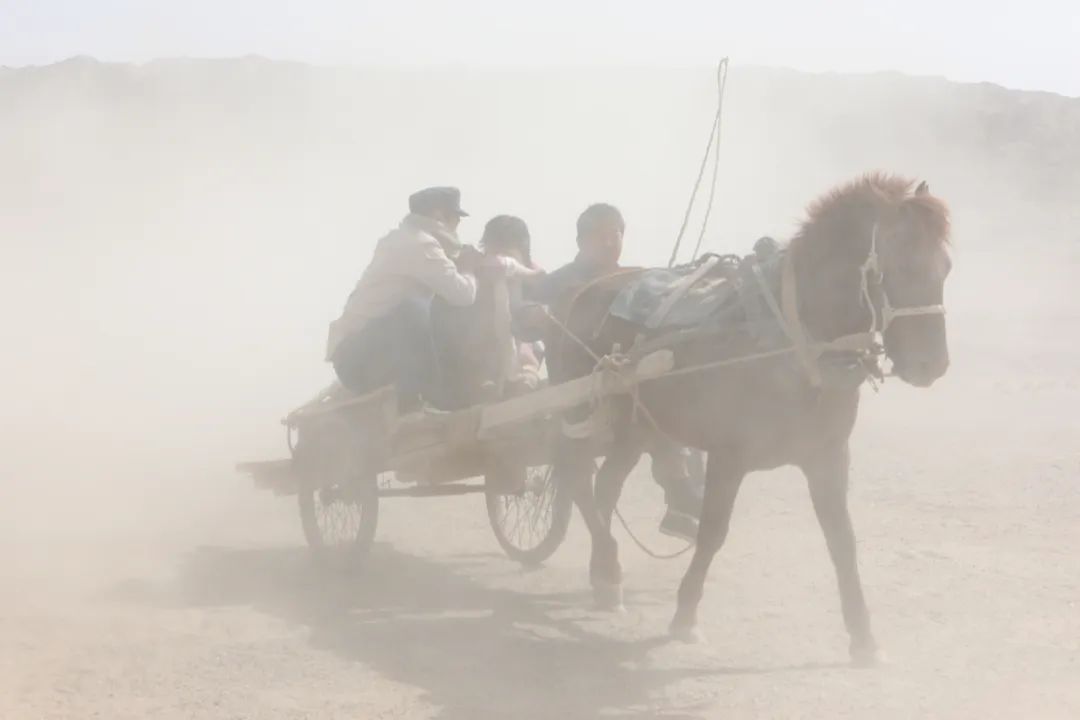
The heroine was assigned to go to Dunhuang after graduation, but encountered a sandstorm.
French film semiotician Metz Zeng said: film is the art of space first, and then the art of time. In the stage space, the distance between the audience and the stage is fixed, but the film can make the audience get rid of the "viewpoint of the front row of the main hall" and immerse themselves in the image space through expressive methods such as scenery, montage, and camera movement. For example, at the beginning of the film, Fan Jinshi, who just graduated from Peking University, crosses the desert in a carriage, and the wind and sand are blowing all the way. On the stage, he can only rely on the actors' libretto, posture and sound effects to stimulate the audience's imagination in a freehand way to complete the narrative; In the movie, the lonely smoke in the desert and the sky full of yellow sand allow the audience to truly feel the harsh climate and environment in Dunhuang and directly generate empathy.
A successful opera film can not only make full use of light and shadow, but also allow the freehand expression of the opera formula to find an appropriate expression in the realism of the image, not to reduce the formula, but to bring the formula to its fullest.
The "three high-fives" of "Daughter of Dunhuang" is an important scene no matter on the opera stage or in the movie: the young Fan Jinshi first arrived in Dunhuang, and with the momentum of a newborn calf, he met Chang Shuhong, the then director of the Dunhuang Academy. Bet, use "three high-fives" to express your determination to take root in Dunhuang. In the stage space, "three high-fives" is an expression of "the foreground is solid, and the background is layered and empty". Fan Jinshi and Chang Shuhong use linear chairs as props, and the audience's appreciation focuses on stylized performances such as singing and body; The "Three Claps" took place in front of the Mogao Grottoes, and the background is the real cave and the unique centipede ladder in Dunhuang, which is more infectious than the stage. At the same time, in order to prevent the actors' singing from delaying the overall rhythm, the director changed some of the singing to narration, focusing on the panorama, and the actors' scheduling also echoed the expression of the stage space, which did not reduce the formula, but also conformed to the narrative rhythm of the movie. Then the camera zoomed in to a close shot of Chang Shuhong, showing his expression change from dubious to gradually moved. The close-up of the hands of the last two people forms the powerful ending of the "three high fives" paragraph. The audio-visual language of this section is mastered skillfully, and the "virtual" of the stage and the "real" of the image are skillfully integrated, and the complex emotions of the characters are expressed more delicately and truly, which greatly enhances and enriches the conflict and artistic appeal of the entire section.
The poetic expression of images outside the environment
Since the "Book of Changes", traditional Chinese aesthetics has explored the relationship between "image" and "artistic conception". Imagery is close to reality, while artistic conception is the expression of the spiritual world of the work. Artistic conception is born of imagery and transcends imagery. Compared with the stage, the realistic imagery of Dunhuang highlights its special meaning through the language of the lens.
After working in Dunhuang for 3 years, Fan Jinshi finally reunited with her husband Peng Jinzhang and had a simple wedding. This paragraph shows the two people's choice of future direction, and it is an important emotional paragraph. On the stage, the actors express the inner struggle of the characters through multiple vocals, and the emotional expression is relatively straightforward; while some vocals are hidden in the movie, adding a lot of scheduling of life scenes, deepening the connection between the characters and the environment, and using the objects of the environment To express the emotions of the characters, it is more charming and poetic than singing and reciting bluntly.
The director used parallel montage techniques to express the hesitation of the newlyweds: Fan Jinshi recalled her husband’s sacrifices for herself while washing the dishes, and signed the application letter heartily; "Seven Lectures on Dunhuang", I couldn't bear her suffering so much, so I tore up the book. Finally, the camera zooms out, and the husband and wife hug each other side by side in the foreground, looking at the full moon outside the background window. The lens language of the whole scene is concise and smooth, and the delicate performances of the actors are performed properly through the scene transition. The "Seven Lectures of Dunhuang" in the hand, a pair of red candles in the room, the drizzle outside the window, the bright moon and other details are not only elements of video narrative, It also embodies artistic conception outside the image, and the image poetry of "beyond the image born from the environment" makes the audience feel unsatisfied.
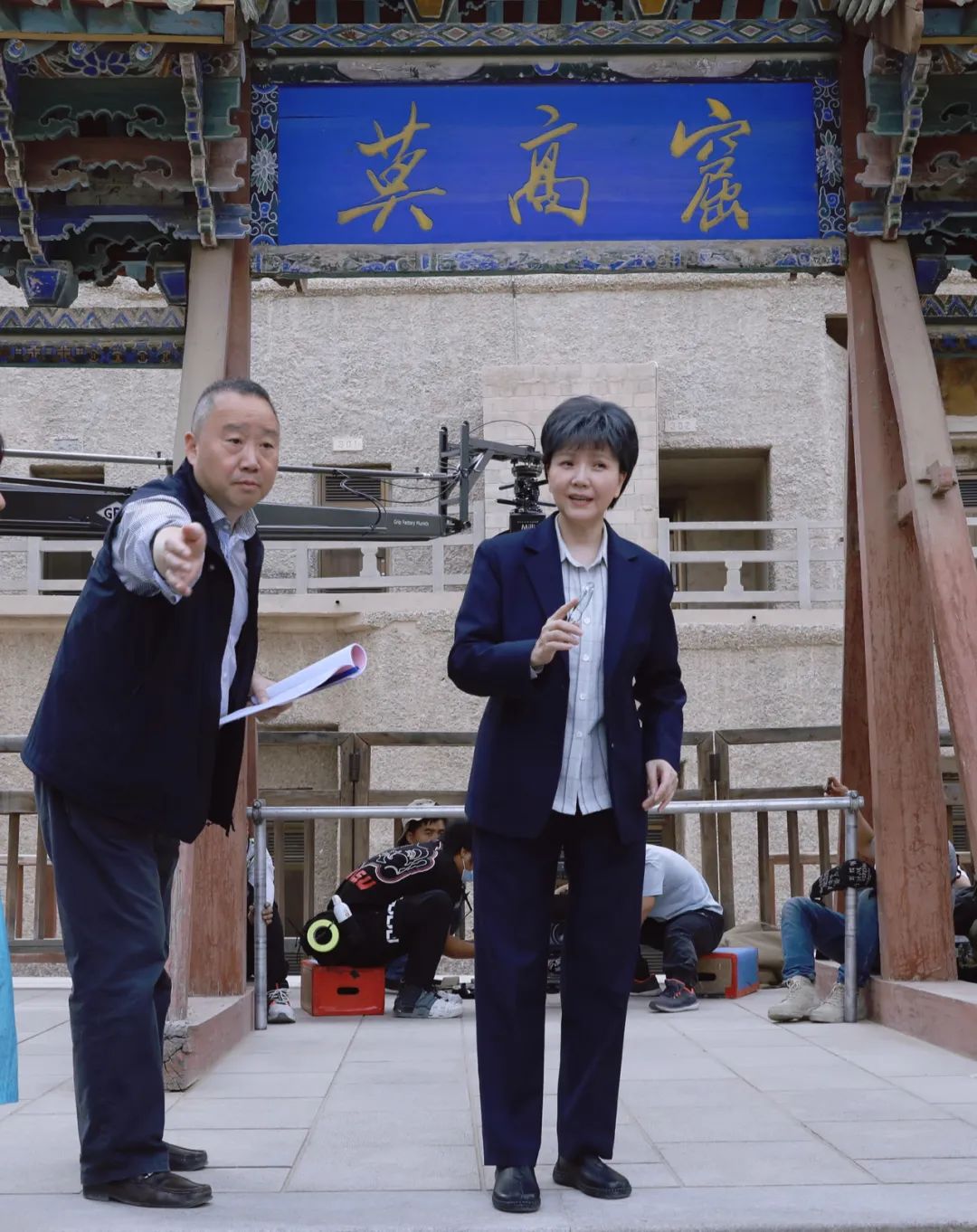
Director Teng Junjie (left) and heroine Mao Shanyu are filming the Shanghai Opera live-action movie "Daughter of Dunhuang".
The film not only has a poetic real scene expression, but also uses digital images to vividly express Dunhuang in a modern and technological way. The live shooting of "Daughter of Dunhuang" in the Mogao Grottoes is inseparable from the display of the artistic treasures in the caves. However, due to the particularity of the scene environment and the limitations of cultural relics protection, in order to make the important Dunhuang murals vivid and alive The film uses CG technology to "live" the characters in the murals, bringing a new visual form to traditional opera. Considering the original program structure and aesthetic characteristics of Shanghai opera art, the application of CG technology in the film is mainly in the expression of time and space with high freehand style such as dark nights and desert caves. For example, the night Fan Jinshi first arrived in Dunhuang, she voluntarily applied to stay in the night watch hut. The poor conditions and the raging rats made this girl from a big city feel shaken. "Have the courage to turn on the flashlight and lightly lift the veil of the night, dimly seeing all the saints and thousands of Buddhas coming together. On one side, the mysterious Buddha has a meditative smile; on the other side, the beautiful flying sky sets up colorful clouds. A heart has a moment to rely on.” Here, Fan Jinshi’s persistence is not only expressed in the arias of the characters, but also the pictures are superimposed into the bright murals in the cave. The characters on the murals gradually dance, and the Buddha statues also become three-dimensional. Thousands of Buddhas come together." CG breaks the boundary between the virtual and the real, brings the "reality" of images to the audience with the "virtual" of digital technology, and presents the world's art treasures to the audience vividly. "Dunhuang Road" endows it with fresh and technological brilliance.
In this brilliance, the most dazzling is undoubtedly the image symbol throughout the film-the meditation Buddha.
The image is full of meaning, the characters are tangible, and the charm is endless
The meditation Buddha statue is in Cave 259 of Mogao Grottoes, and it was first molded in the Northern Wei Dynasty. , naturally received in front of the abdomen, with a solemn expression, quiet and sweet, as if completely entering a wonderful world." The solemn and majestic appearance of the Buddha in meditation is the narrative symbol of the film's "inception and transformation" and the growth of the characters.
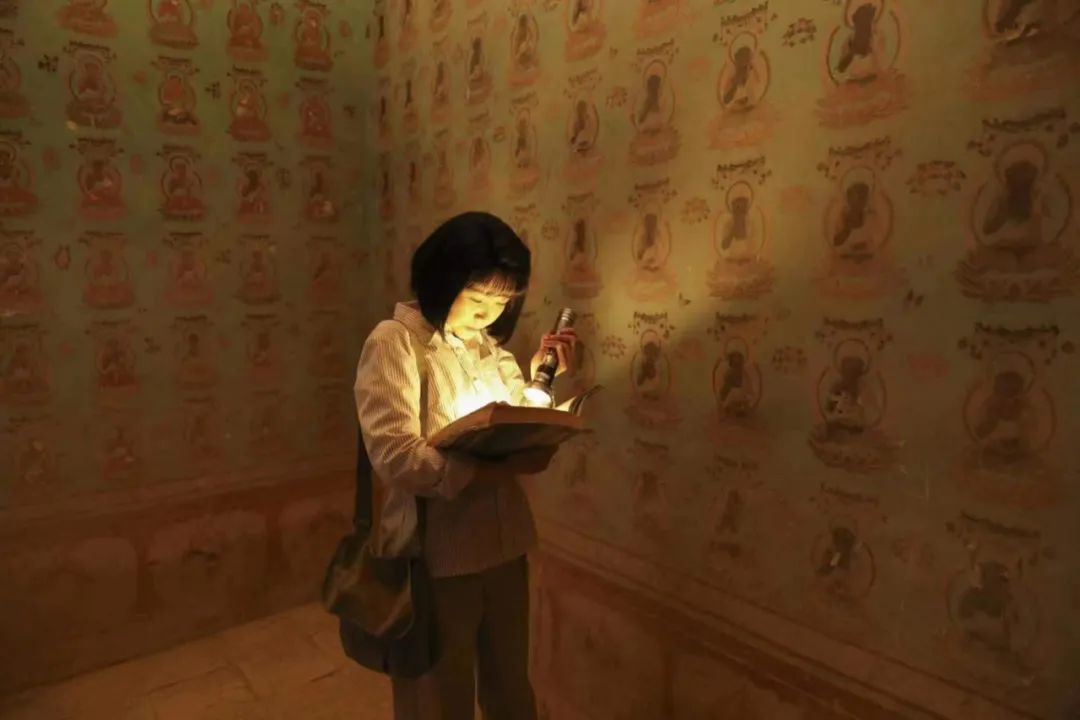
Fan Jinshi is doing archaeology in the cave.
Mr. Jiao Juyin once pointed out that "when an actor is creating, he must first cultivate a mental image from the outside to the inside, and then from the inside to the outside... There is no image without a mental image." Generally speaking, biographical movies pursue the appearance close to the characters, and make the actors as close to the characters as possible through special makeup. Mao Shanyu's appearance is not very similar to Fan Jinshi's. On the stage, you don't need to seek the truth of reality, but once it is put on the screen, it will be a great test for opera actors.
Mao Shanyu is the representative inheritor of the first batch of national intangible cultural heritage items—Shanghai opera. She has many film and television drama shooting experiences, so she is no stranger to performing in front of the camera. In the film, she combines the two performance methods of program and reality, combining arias with lines and facial expressions, weakening the figure, integrating emotional experience, not seeking to reproduce the appearance, but seeking to be consistent with the expression and charm.
Due to live shooting, how to overcome the harsh shooting environment and express Fan Jinshi's real life in the form of images, while integrating the performance program of opera, is the key problem Mao Shanyu wants to solve. During the creation of the stage play, she led the main creative team to Dunhuang 9 times to deepen life, and became friends with Fan Jinshi herself. For actors, this is a very important process of "grasping shape" (Zheng Junli's language, referring to actors using real people as models), which laid a very solid foundation for their subsequent film performances.
When shaping Fan Jinshi of Girls’ Generation, in order to reflect the vigor and drive of the characters, Mao Shanyu mainly used opera-style body performances, especially in the "three clapping" section in front of the cave. The young Fan Jinshi expressed his determination to take root in Dunhuang and climb the centipede A series of beautiful and neat body presentations, such as ladders, braids, and three-claps, are all integrated into the body and footwork of Daomadan in opera, which is in line with the character's active and lively personality background.
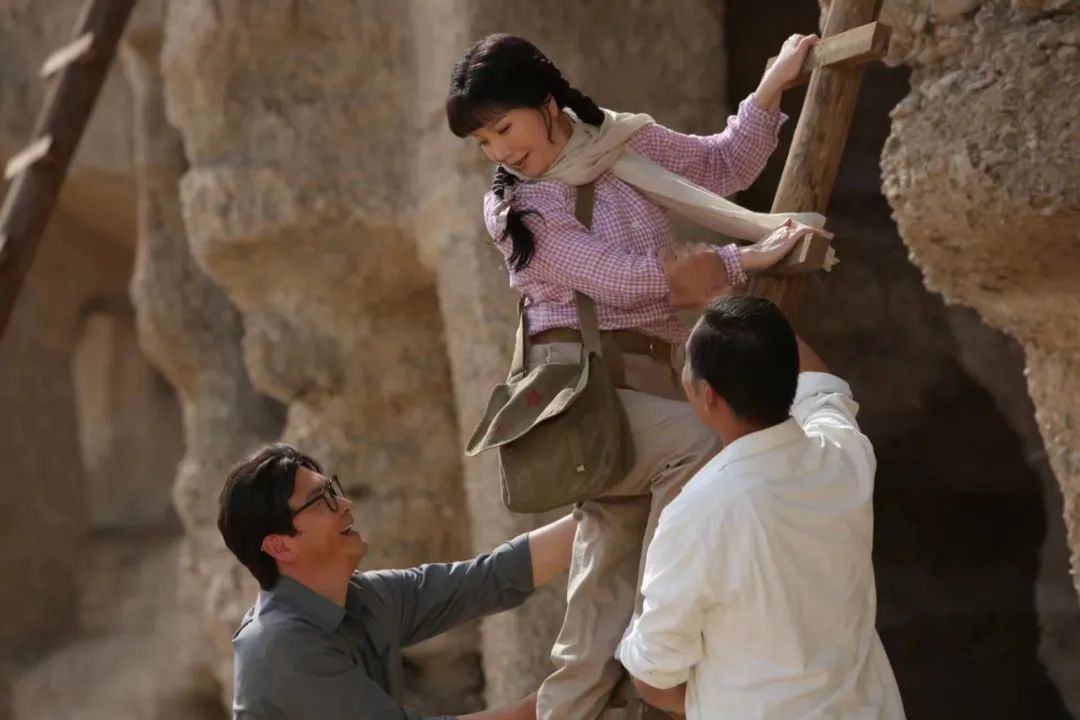
With the encouragement of my predecessors, I learned to climb the "centipede ladder".
When shaping Fan Jinshi after becoming a mother, Mao Shanyu focused on a delicate and realistic performance style. When Peng Jinzhang went to visit relatives in Dunhuang and found that Fan Jinshi was busy with work and tied his son under the age of one to the bed, a rare quarrel occurred between the couple. This scene is also an important scene of the two people's emotional clues. The director used Fan Jinshi's simple dormitory as a single scene to form a stage-like space in the camera. , facial expressions, etc., supplemented by body, singing and other programs. For example, her grievance when she was blamed by her husband, her distress when she saw her son crying, etc., Mao Shanyu expressed these delicate and complex emotions through the expression of her eyes. The details were handled by her mother in real life rather than on the opera stage.
This not only conforms to the calmness of the characters entering middle age, but also improves the conflict and rhythm of the internal narrative of this paragraph, which meets the aesthetic requirements of the film.
Actor's character creation is a process from perceptual knowledge to rational knowledge and back to practice. It is not just a simple imitation of image, body and action, but also the psychological, emotional and even spiritual aspects of the character. Actors have to go beyond their first self and dig out the spiritual life of this character and only this character from the depths of their second self, so as to create a character that is not thin but has a soul. The most commendable thing about Fan Jinshi is a simple and noble temperament with both hardness and softness. This may be Fan Jinshi's nature, and it should be the state of enlightenment and Taoism achieved by facing the Buddha in meditation every day. The most successful part of Mao Shanyu is to express the unique temperament of Fan Jinshi.
At the beginning of the film, the octogenarian protagonist slowly steps into a familiar cave. The picture is a big backlight, Mao Shanyu walks from the light and shadow, the sunlight outside the cave reflects her thin figure, like a meditating Buddha statue set off by the light of the Buddha. In this light and shadow, Mao Shanyu sang calmly, recalling the hardships of the Mogao Grottoes along the way. The road is as simple as it is simple. At this moment, the actor does not have too much scheduling, lines and expressions, but his eyes and temperament are the most similar to Fan Jinshi. It is not because of the makeup and styling, but the calm, calm and tranquil charm expressed by Mao Shanyu.
When the film came to an end, it echoed from beginning to end, and the camera once again showed the magnificent panorama of Dunhuang. The elderly Fan Jinshi, played by Mao Shanyu, walks on the plank road overlooking the vast Mogao Grottoes, and the camera flashes back a series of scenes of her working inside and outside the cave. Mao Shanyu looked back on the past and sang the theme song of "Daughter of Dunhuang". Then she came to the nine-story building of Mogao Grottoes, turned her back to the camera and looked up at the tall building; accompanied by the melodious and clear sound of wind chimes, the figure slowly turned around—it was Fan Jinshi in reality.
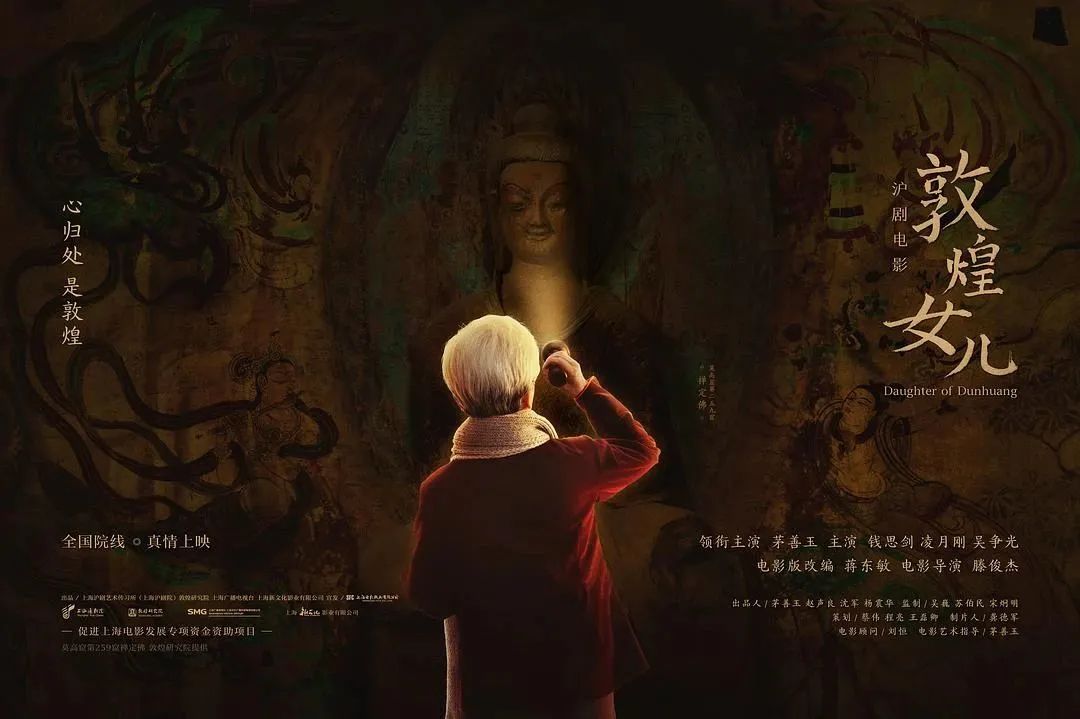
In reality, Fan Jinshi faces the camera and looks into the distance, like a meditating Buddha showing an elegant smile, revealing her pure and extraordinary aura.
At this moment, the performance and reality are integrated, virtual and real, all phenomena are unified, and the image is instantly frozen on the screen, only the sound of the wind outside the picture is floating, with a profound charm.
When the famous director Sang Hu filmed the color Yue opera film "Liang Shanbo and Zhu Yingtai", he reorganized the opera narrative according to the aesthetics of the film, combined with real scenes and painted scenes. In the 1950s, the film showed the charm of opera images with the technology at that time, but due to the limitations of the subject matter and technology, it still focused on the stage recording of "songs and dances". With the rapid development of media technology today, can opera art form an innovative aesthetic in the new era? The movie "Daughter of Dunhuang" combines realistic operas with real scenes in Dunhuang, and successfully transforms narrative rhythm, space scheduling and programmed performances into video aesthetics, showing the stronger artistic appeal of operas after crossing media, which is an innovative aesthetic of traditional art. It is also an image practice that promotes the self-confidence of national culture.
(Published in Chaohua Weekly of Jiefang Daily on December 29, 2022, all pictures are from official stills and posters)










Comments